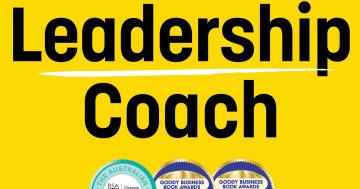Gleb Tsipursky* says there’s a right way and wrong way to help colleagues face up to reality.
 When was the last time a colleague said something so ridiculous that it made your jaw drop?
When was the last time a colleague said something so ridiculous that it made your jaw drop?
A four-year study by LeadershipIQ.com found that employers and boards fired 23 percent of CEOs for denying reality, meaning refusing to recognise negative facts about his or her organisation’s performance.
Additionally, our recent challenge of mostly politically-driven alternative facts and dealing with colleagues in denial can get overwhelming.
We typically respond to people denying reality by confronting them with the facts and arguments.
But research suggests that’s precisely the wrong thing to do.
Research on confirmation bias shows that we tend to look for and interpret information in ways that conform to our beliefs.
There is an emotional investment in continuing to believe what you want to believe.
Furthermore, studies on a phenomenon called the backfire effect shows when presented with facts that cause us to feel bad about our self-worth or worldview, we may sometimes even develop a stronger attachment to the incorrect belief.
Our mental blindspots
These mental blindspots are two of over 100 dangerous judgment errors that result from how our brains are wired, what scholars in cognitive neuroscience and behavioural economics call cognitive biases.
We make these mistakes not only in work but also in other life areas.
For example, in our shopping choices, as revealed by a series of studies.
Fortunately, recent research in these fields shows how you can use pragmatic strategies to address these dangerous judgment errors, whether in your professional life, relationships, or other life areas.
You need to evaluate where cognitive biases are hurting you and others in your team and organisation.
Then, you can use structured decision-making methods to make “good enough” daily decisions quickly, more thorough ones for moderately important choices, and an in-depth one for truly major decisions.
Such techniques will also help you implement your decisions well and formulate truly effective long-term strategic plans.
In addition, you can develop mental habits and skills to notice cognitive biases and prevent yourself from slipping into them.
A better way to deal with ‘The Ostrich Effect’
In today’s divisive world, there are two distinct types of denial: personal and professional.
How we deal with those in denial on non-business matters is a personal choice.
So, for this post, we’ll focus on the professional aspect of denial, or “The Ostrich Effect.”
Keep in mind that these same concepts apply to professional and personal relationships and all forms of denial.
So how do you deal with colleagues suffering from the professional form of denial?
Rather than arguing, it is much more effective to use a research-based and easy-to-remember strategy I developed called EGRIP.
This acronym stands for Emotions, Goals, Rapport, Information, and Positive Reinforcement.
For instance, consider Mike’s case, a new product development team lead in a rapidly-growing tech start-up.
He set an ambitious goal for a product launch, and as more and more bugs kept creeping up, he refused to move the date.
People tried to talk to him, but he hunkered down and kept insisting that the product would launch on time and work well.
I was doing coaching for the company’s founder, and he asked me to talk to Mike and see what’s going on.
During my first conversation with Mike, I explained the EGRIP concept:
E – Connect with their emotions
In the workplace and out, when someone denies clear facts they qualify as one of your colleagues in denial.
So you can safely assume that their emotions are leading them away from reality.
While gut reactions can be helpful, they can also lead us astray.
What works better is to focus on understanding their emotions and to determine what emotional blocks might cause them to stick their heads into the sand of reality.
In my conversations with Mike, I discovered that he tied his self-worth and sense of success to “sticking to his guns.”
He associated strong leadership with consistency, so he was afraid of appearing weak in his new role as the team lead.
He believed team members were trying to undermine him by getting him to shift the schedule and admit he failed to deliver.
This false association of leadership with consistency and fear of appearing weak is a frequent problem for new leaders.
G – Establish shared goals
Then, you must establish shared goals, which is crucial for effective knowledge sharing.
I spoke with Mike about how we both shared the goal of having him succeed as a company leader.
Likewise, we both shared the goal of having the new product be profitable.
R – Build rapport
Next, build a rapport by establishing trust.
Use empathetic listening to echo their emotions and show you understand how they feel.
I spoke to Mike about how it must hard to be worried about the loyalty of one’s team members and also discussed what he thinks makes someone a strong leader.
I – Provide information
At this point, start providing new information that might prove a bit challenging — but won’t touch the actual pain point.
I described to Mike how research suggests one of the most important signs of being a strong leader is the ability to change your mind based on new evidence.
Along the way, I provided examples such as Alan Mulally saving Ford Motor Company through repeated changes.
If I had begun with this information, Mike might have perceived it as threatening.
However, by slipping it in naturally as part of a broader conversation — after cultivating rapport built on shared goals — Mike accepted the information calmly.
P – Provide positive reinforcement
Then, after the person changes their perspective, provide them with positive reinforcement, a research-based tactic of shifting someone’s emotions.
The more positive emotions the person associates with the ability to accept counter-intuitive facts as an invaluable skill, the less likely anyone will need to have the same conversation with them in the future.
Dealing with colleagues in denial: A different approach
With Mike, I discussed where he could best exhibit these characteristics.
Specifically, we talked about how to show those who might try to undermine him what a strong leader he is — and at the same time make the new product as profitable as possible.
I directed the conversation toward how he can show strength by delaying the launch of the new product.
Eventually, he agreed, and I praised his ability to show strength and leadership by shifting his perspective.
From that point on, his team knew Mike based his views on objective data and evidence.
Next time you’re dealing with colleagues in denial, I wish you good luck.
Remember that you can use EGRIP not simply in professional settings but all situations.
Keep EGRIP in mind whenever you want to steer others away from false beliefs that cause them to deny reality.
*Dr. Gleb Tsipursky is an internationally-renowned thought leader in future-proofing: forecasting and addressing upcoming threats and opportunities. He is CEO Disaster Avoidance Experts.
This article first appeared at talentculture.com.











